Last updated on Oct 26, 2022
How to Write an Amazon Book Description That Sells (+ Examples)
A book description is a short summary of a book’s story or content that is designed to “hook” a reader and lead to a sale. Typically, the book’s description conveys important information about its topic or focus (in nonfiction) or the plot and tone (for a novel or any other piece of fiction). Readers can usually find the back description on the back cover of a book, or prominently displayed on retailer websites, like Amazon.
Self-publishing authors typically write their own book descriptions, though many writers hire professional book marketers with copywriting experience to ensure that their books aren’t held back by an unexciting description.
We’ll take you through our tips for writing effective book descriptions below, but first, here’s a free template to help you assemble the elements of yours.
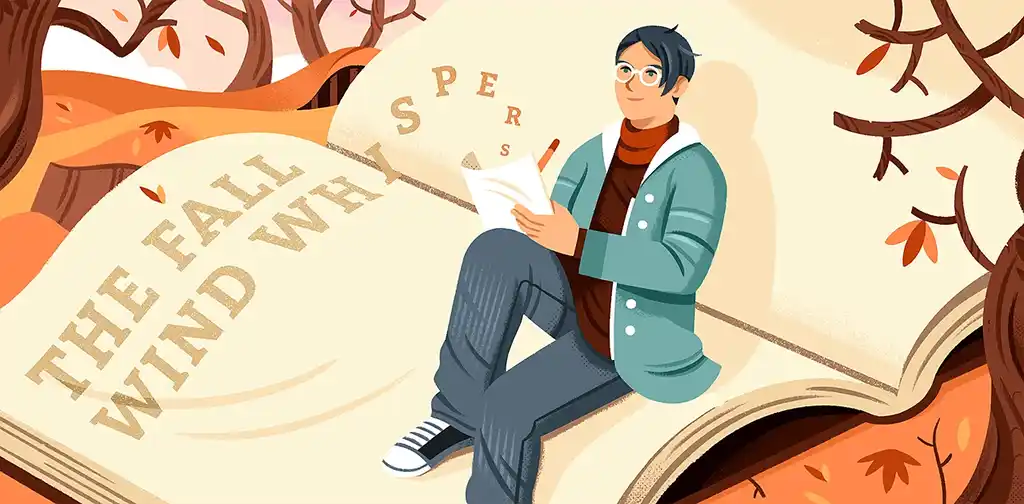
FREE RESOURCE
Book Description Template
Learn to write a book description that will make readers click “buy.”
Let’s dive right in.
1. Start with an attention-grabbing headline
When writing about your book, capture your reader’s attention as quickly as possible. Make an impact with the very first line of your description by:
- Introducing key elements of the story;
- Conveying the tone and genre of your book;
- Leading with a quote of praise or an accolade, like a book award;
- Addressing the reader in second person.
The examples below are the first lines of book descriptions on Amazon. See how they utilize some of the tactics above to hook the reader in:
|
Valley of Lies by Michael Campling |
A Village, A Murder, A Keen-eyed Sleuth. |
|
Rosalind by Jenny Hambly |
He is determined to avoid marriage, she to despise men… |
|
The Lighthouse by Christopher Parker |
Enchanting, mysterious, and deeply romantic, The Lighthouse follows a young woman's breathtaking journey far from home to discover where she truly belongs. |
|
Hermitage, Wat and Some Nuns by Howard of Warwick |
From the world’s best-selling author of comedy historical mysteries comes another largely pointless excursion. |
|
The Smart Home Manual by Marlon Buchanan |
Do you want to make your home smart, but aren't sure where to begin? |
Notice how these opening lines manage to convey their books’ genre through their choice of words. You can already tell that these are a murder mystery, a Regency romance, a supernatural fiction novel, a comedy historical mystery, and a nonfiction book — which shows how much you can pack into a first sentence. Each of these sets up an important element: be it the key dynamic between the romance couple or the self-deprecating tone of the historical mystery, they all succinctly convey an impression of the reading experience.
⭐️ Apart from great book descriptions, what else do the authors above have in common? They’ve worked with professional editors, designers, translators, and marketers on Reedsy.

MEET THE BEST PUBLISHING PROFESSIONALS
Polish your book with expert help
Sign up to browse 2000+ experienced editors, designers, and marketers.
Leading with quotes and reviews
If you’ve got some killer editorial reviews, you can also start with those, or highlight any notable mentions the book has received — especially common in literary fiction, a genre strongly associated with prestige. For example, here’s what comes at the top of the description for Bryan Washington’s Lot:

Haven’t got any reviews yet? For new releases about to launch, you can submit your book to Reedsy Discovery, our book review platform dedicated to championing indie authors.
Keep retailer websites in mind
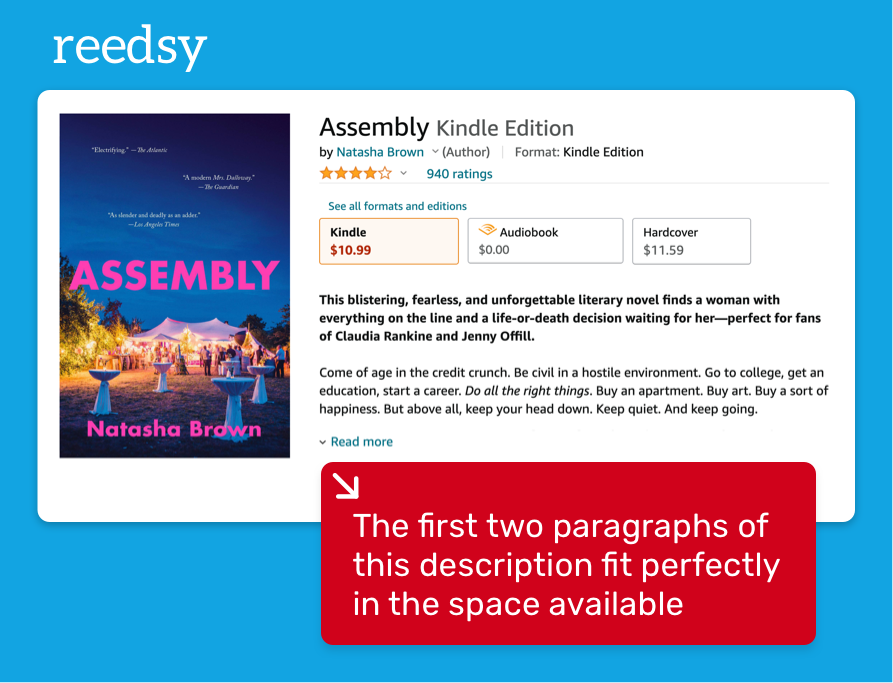
As you can see above, when a reader lands on your Amazon page, they will only see the first few lines of your product description before it gets cut off. You have very limited words to convince them to click “Read more” — or even better, “Buy now.” As you work on crafting the ideal book description, never forget how it will appear on the page.
See how it looks on the page
When you’re happy with your opening, try pasting it into Amazon to see what it ends up looking like on the page. If the opening sentence doesn’t end before the “Read more” button, keep editing until it does. You can also set your first few sentences apart from the rest of the description by inserting a blank line between the two, so make sure this all fits in the space you’ve got.
If you struggle to find that perfect opening, consider working with a book marketer specializing in blurb and metadata optimization. These experts understand all the trends and techniques that go into a perfect description and can help maximize your book's potential.
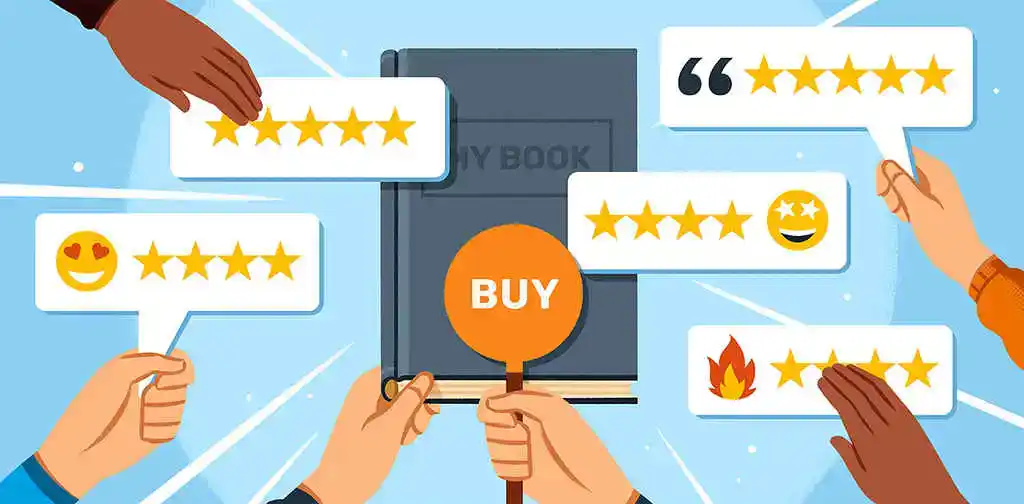
GET MARKETING HELP
Meet marketing wizards
Boost book sales with ads, social media strategy, and other marketing magic.
Whether you’re jumping straight into your book’s content or describing it after listing a quote from someone or an accolade, your next step will be to provide the bulk of the description.
2. Describe your content (without spoilers)
Having captured the reader’s attention, you can now tell them more by quickly painting a representative picture of your book’s contents. In other words, it’s time to write a concise and effective synopsis.
How do you condense your whole book into a synopsis? Marketer Bryan Cohen, who hosted a Reedsy webinar on book descriptions, suggests focusing on the what will get your target reader the most excited.
“Novels tend to have one main conflict, and nonfiction books usually have one main takeaway. If you list out all of your book's conflicts or takeaways, you need to choose the one that's the biggest, that's going to get your target reader excited.
“It's not about trying to condense every last plot point. It's about figuring out what the big thing your readers would be excited about is and basing your description on that.”
Here’s the description of Lucy by the Sea by Elizabeth Strout:
“As a panicked world goes into lockdown, Lucy Barton is uprooted from her life in Manhattan and bundled away to a small town in Maine by her ex-husband and on-again, off-again friend, William. For the next several months, it’s just Lucy, William, and their complex past together in a little house nestled against the moody, swirling sea.
Rich with empathy and emotion, Lucy by the Sea vividly captures the fear and struggles that come with isolation, as well as the hope, peace, and possibilities that those long, quiet days can inspire. At the heart of this story are the deep human connections that unite us even when we’re apart—the pain of a beloved daughter’s suffering, the emptiness that comes from the death of a loved one, the promise of a new friendship, and the comfort of an old, enduring love.”
As you can see, the first paragraph quickly sets up the frame and facts of the story — then the second draws readers into the themes and ideas “at the heart of this story”, showing them the emotions they can expect. This two-paragraph structure can help you stick to what’s necessary, so give it a go!
For more on effective plot summaries, check out our post on book blurbs.
💡 Pro tip: Use adjectives that convey tone and mood instead of generic superlatives. “Empowering,” “thrilling,” “heartwarming” and other mood-specific adjectives are more effective than vaguely declaring your work an “excellent,” “fantastic,” or “magnificent” book.
When your description is all done, it’s time to read through it and make sure you’ve included any relevant keywords to help readers find your book.
3. Include relevant keywords
Readers tend to use a few different strategies to find new books. Some keep up with recent releases and look for specific titles they’ve heard about, some look up specific authors, while others may seek out discounted books. One group, however, will seek out books (by asking booksellers or search engines) about specific topics, in a certain genre, that have been nominated for a particular award, or titles comparable to something else they’ve read, e.g. “books like Outlander.”
For this group of readers, you have to ensure your book description clarifies where your book falls in the market. This is something you can do by choosing the right keywords. Relevant keywords to your book could be:
- The book’s genre, subgenre, or important tropes (e.g. mystery, historical thriller, Enemies-to-Lovers romance);
- Major themes (e.g. bereavement, friendship, justice, healing);
- A related series name (e.g. if you’re writing high fantasy, The Witcher);
- Awards (e.g. if your book was longlisted for The Women’s Prize for Fiction);
- Brands or celebrities involved (e.g. if your book was a Reese’s Book Club pick).
For nonfiction, some keywords should also appear in your title, making your book’s focus instantly discernible. For example, the title of Win Every Argument: The Art of Debating, Persuading, and Public Speaking makes the book more likely to appear in searches for debating and public speaking. Your description can then pose the target readers’ central problem (using keywords readers might search for), then outline how you’re going to help resolve or understand it.
If you’re worried this is will read unnaturally, don’t. Your keywords are relevant by default — that’s what makes them helpful. Don’t take this advice to mean you should overstuff your description with the same term over and over — just check you aren’t leaving essential descriptors out by accident.
Here’s an example of keywords (bolded for your convenience) used in a natural and helpful way, from the description of Tired as F*ck by Caroline Dooner:
Blending memoir and blistering social observations, the author of The F*ck It Diet looks back at her desperate attempts to heal her hunger, anxiety, and imperfections through extreme diets, culty self-help methods, and melodramatic bargains with the universe.
Offering a frank and funny critique of the cultural forces that are driving us mad, Caroline Dooner examines how treating ourselves like never ending self-improvement projects is a recipe for burnout. We have become unknowingly complicit in perpetuating our own exhaustion because we are treating ourselves like machines. But even phones need to f*cking recharge.
Caroline takes a good hard look at the dark side of self-help, and explains how she eventually used a radical period of rest to push back against cultural expectations and reclaim some peace.
Tired As F*ck empowers us to say no to the things that exhaust us. It inspires us to carve out time to slow down, feel okay about doing less, and honor our humanity.
This is not a self-help book, it’s a cautionary tale. It’s an honest look at the dogma of wellness and spiritual self-improvement culture and revels in the healing power of rest and letting shit go.
If you want to understand more about how Amazon’s algorithms work, we’ve got a few related resources for you — and a free course you can sign up for below:
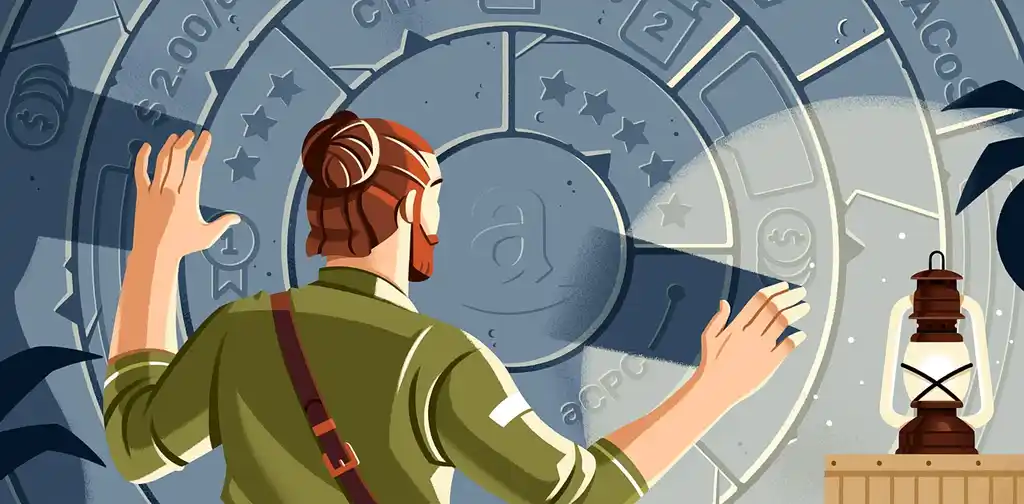
FREE COURSE
Amazon Algorithms for Authors
Learn to optimize your book description, pick categories, and sell more books.
Recommended reading:
- Ricardo Fayet’s free book How to Market a Book
- Amazon Keywords for Authors: Unlock Your Potential on Kindle
- Amazon Categories: An Author's Essential Guide
Once you’ve described the contents of your book, it’s time to do some showing off.
4. Show off your authorly credentials
Your track record and credentials are important regardless of what you’re writing, but they’re less important in fiction. It’s great if you can name other published books or mention you’ve won awards or become a bestseller — but it’s not always essential. Assuming your book looks professional, fiction readers will likely care more about the book’s story than any perspex trophy sitting on your shelf. However, in nonfiction, credentials are important because they show you’re worth listening to as a voice of authority.
Tell the good folks about yourself
Always assume people don’t know your name. Use your book description to briefly introduce yourself and your topical authority. Are you an expert in your field? Have you previously published works on similar topics to this book? Do you have singular insight into a topic no one else does? Tell us right away. Combined with the information in your author bio, your book description can persuade the reader to listen to what you have to say.

For instance, the description for Tyler Cowen’s Average Is Over (a book on economics) starts with: “Widely acclaimed as one of the world’s most influential economists, Tyler Cowen returns with his groundbreaking follow-up to the New York Times bestseller The Great Stagnation.”
As you can see, the description positions Cowen as an authority in his field, backing this up with persuasive specifics (NYT bestselling title).
Meanwhile, a fiction example can be found in the Amazon page for Brandon Taylor’s Late Americans: “The author of the Booker Prize finalist Real Life and the bestselling Filthy Animals returns with a deeply involving new novel of young men and women at a crossroads.”

Both authors have had great success in the past, so it’s natural for their book descriptions to remind readers of that. If you’re a debut fiction author without any relevant accomplishments, feel free to skip this part: shift the focus to your story instead. Some biographical information will be expected for nonfiction authors — if you’ve written a book already, this will be something you’ve covered in your book proposal, so re-read over that and consider how you might best introduce yourself.
Recommended reading:
- How to Write a Book Proposal [+ Template]
- About the Author Examples (That You'll Actually Want to Read)
- How to Set Up Your Author Page on Amazon Author Central
Now that you’re done blowing your own horn, let’s turn to one final thing that could push yourbook description over the top: a reference to similar books.
5. Name appropriate comp titles

One way you can convince readers your novel is the right one for them is to point to similarities between your book and well-known, comparable titles (also known as “comp titles”) you share a readership with.
Your comp titles should make sense in overall atmosphere as well as genre: if you compare your book to a successful romance author’s work, but your book doesn’t end with the two love interests getting together, instead ending in catastrophe, think twice about naming that author as a comparable writer — the comparison would be misleading, and any readers who trust it will be disappointed.
We’ve listed some more tips about selecting the right books in our guide to picking comp titles, so for now, let’s take a look at how they can be introduced when you’re describing your work. Here are a few examples of book descriptions doing this well:
“A classic romcom with a Regency-era twist, for fans of Mean Girls and Bridgerton.” — Reputation by Lex Croucher
“Beautifully written and completely immersive, this exceptional debut novel is perfect for fans of Circe, A Song of Achilles, and The Silence of the Girls.” — Ariadne by Jennifer Saint
“A delightfully gripping historical cozy whodunnit full of intrigue and wit. Fans of T E Kinsey, Agatha Christie and Lee Strauss will be totally charmed.” — Death Down the Aisle by Verity Bright
“An LGBTQ+ graphic novel about life, love, and everything that happens in between - for fans of The Art of Being Normal, Holly Bourne and Love, Simon.” — Heartstopper by Alice Oseman
“If you like Lee Child's Jack Reacher, Vince Flynn's Mitch Rapp, and Robert Ludlum's Jason Bourne, you won't be able to put down the compulsively addictive John Milton series.” — The Cleaner by Mark Dawson
You’ve now got all the essential elements of a great book description, so there’s just one more thing to do: make sure it’s formatted correctly and effectively.
6. Format your description to stand out
“Don’t think that a book description has to be a few block paragraphs,” says Reedsy editor Ameesha Green. “Mix it up with different styles.” Of course, she isn’t talking about colorful extravaganzas, but simple things like bolding or italicizing text can help your description be more legible at a glance. To do just that, you’ll have to familiarize yourself with a tiny amount of HTML code — the building blocks of internet text.
There is just one principle you have to understand: HTML appears as pairs of angled brackets enclosing some characters, which determine the effect. The opening brackets contain the instruction for how the following text should be styled, and the closing bracket contains a slash before the same instruction — to indicate the end of that style. If your HTML isn’t working, always check that the slashes are in the right place.
Common HTML for Amazon book descriptions
Here’s a cheatsheet to the most important HTML elements you might need for your book description:
- Bold: <b>YOUR TEXT HERE</b>
- Italics: <i>YOUR TEXT HERE</i>
- New paragraph: <p>YOUR TEXT HERE</p>
- Large heading: <h4>YOUR TEXT HERE</h4>
- Medium heading: <h5>YOUR TEXT HERE</h5>
- Small heading: <h6>YOUR TEXT HERE</h6>
- Bullet point list: <ul>MULTIPLE BULLETS HERE</ul>
- Single bullet within a bullet point list: <li>SINGLE BULLET HERE</li>
Note: Two bullet points within the same list would look like this:
<ul>
<li>Bullet 1</li>
<li>Bullet 2</li>
</ul>.
The <ul> and </ul> brackets only appear once, at the very start and very end of a list, whereas the <li> and </li> brackets enclose every single item in the list. LI in fact stands for “list item”!
For a list of all the HTML elements Amazon allows in book descriptions, head to this Amazon help page — though the reason we don’t list everything here is that we don’t think you should go too crazy with your formatting.
As a rule of thumb, make your first two to four lines stand out, either by bolding or turning them into a heading. Then the rest of your description can stay formatting-free — or you may choose to bold one or two important phrases. For nonfiction titles, you might want to list chapters or topics covered in bullet points, but that’s totally optional.
Here’s an example of a minimally-formatted book description, from Ruth Ozeki’s A Tale for the Time Being:

As you can see, Ozeki’s publisher has bolded the opening to draw the reader’s eyes there, then used italics to quote from the book, allowing the rest of the text to remain unformatted for ease of reading.
Optimizing your book description for online retailers is critical if you want to actually move copies, so don't neglect it. Assuming a reader has made it to your book's product page, it'd be a shame to waste an opportunity to hype up your book. Give it your best!


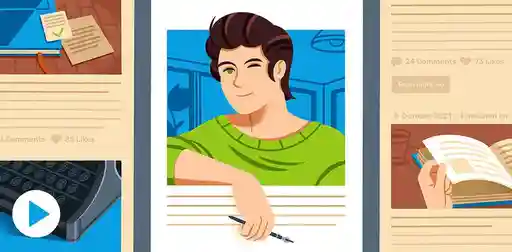
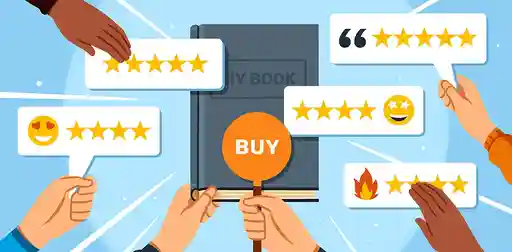
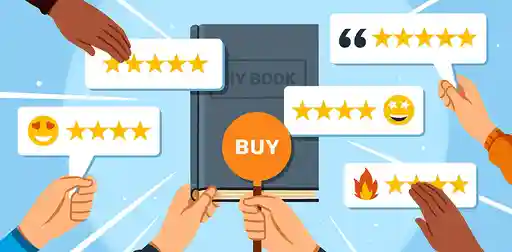




1 response
Tailor says:
20/04/2020 – 16:34
Frankly I don't like it. I've seen hundreds of amazon books, and every description sounds exactly the same. The same choice of words, the same structure, there are always questions thrown in the mix as well. Thanks to that, instead of showing the style of the novel, the description is just a plain template. It's fine for new readers, but for someone who has seen a lot, it start becoming boring and discourages from reading these books. I am still wondering if one person is responsible for every single book description in amazon... And seeing: "just like Harry Potter", "another Lord of the Right" is not encouraging. P.S. Sorry for my rant, this is the first article that came into my radar